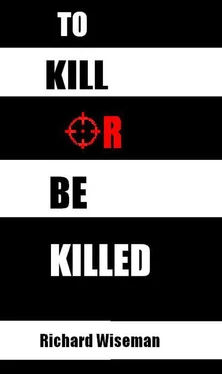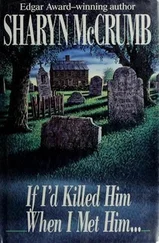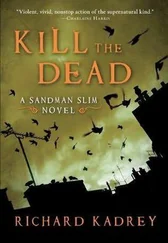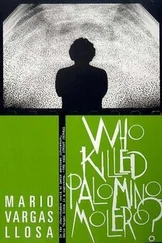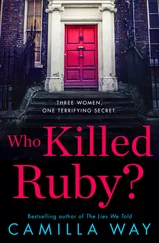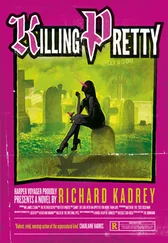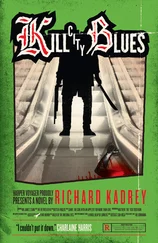Richard Wiseman - To Kill Or Be Killed
Здесь есть возможность читать онлайн «Richard Wiseman - To Kill Or Be Killed» весь текст электронной книги совершенно бесплатно (целиком полную версию без сокращений). В некоторых случаях можно слушать аудио, скачать через торрент в формате fb2 и присутствует краткое содержание. Жанр: Триллер, на английском языке. Описание произведения, (предисловие) а так же отзывы посетителей доступны на портале библиотеки ЛибКат.
- Название:To Kill Or Be Killed
- Автор:
- Жанр:
- Год:неизвестен
- ISBN:нет данных
- Рейтинг книги:3 / 5. Голосов: 1
-
Избранное:Добавить в избранное
- Отзывы:
-
Ваша оценка:
- 60
- 1
- 2
- 3
- 4
- 5
To Kill Or Be Killed: краткое содержание, описание и аннотация
Предлагаем к чтению аннотацию, описание, краткое содержание или предисловие (зависит от того, что написал сам автор книги «To Kill Or Be Killed»). Если вы не нашли необходимую информацию о книге — напишите в комментариях, мы постараемся отыскать её.
To Kill Or Be Killed — читать онлайн бесплатно полную книгу (весь текст) целиком
Ниже представлен текст книги, разбитый по страницам. Система сохранения места последней прочитанной страницы, позволяет с удобством читать онлайн бесплатно книгу «To Kill Or Be Killed», без необходимости каждый раз заново искать на чём Вы остановились. Поставьте закладку, и сможете в любой момент перейти на страницу, на которой закончили чтение.
Интервал:
Закладка:
Mason mused on the British Navy submarine drop off. There was influence in the mission he was sure. Though they’d only given them thirty pounds cash and a fake credit card, though a working one. Because his train was pre-booked he had the ticket. It was all very well organised.
Thirty quid though. He smiled, cheapskates, this had to be a government funded kill, but why have them enter that way? It didn’t add up. Mason took a speculative sip at the tea and winced. Still too hot a small wave of tea burnt his fingers as the train jump stopped and jolted into the next station in what seemed an unending chain of ‘dree’ stops.
Chapter 13
London
8- 45 a.m.
April 17th
McKie stepped from the fuggy train onto the London concrete slipping into the salmon throng of commuters working their way up stream one way or another. They all threaded their way through the eye of the ticket barrier McKie amongst them. The stream of commuters spread out into the city and he headed down into the underground for the quick hop to Warren Street.
On the underground platform he looked up at a CCTV camera and wondered if any colleagues were tuned in. It was one of the amazing facts about DIC that they were able to access every closed loop camera network in the country. The firm that serviced the national and business cameras was in fact a front for a branch of DIC whose bid for the job was secured by underhanded dealings. The front firm meant that DIC technicians placed digital microwave transmitters which used the cell phone network to feed all the captured images, which were bled from the camera, into the computer storage systems of local DIC operatives. The DIC job of monitoring the entire country was helped enormously by the system. Scanning through hours of CCTV footage is more interesting than one might think and being paid well to do so at home a good way of making a living.
The tube train from Charing Cross on the Northern Line shook its way into Warren Street station.
For McKie the city was full of potential; miles and miles of streets and buildings full of rooms, full of humanity, with all the chaos and turbulence that goes with it. The day was just beginning and he felt invigorated by the life around him. He followed the map in his head to the building two streets away.
If you look at a satellite map search of Euston Road you’ll see the top of the fourteenth largest office building in London; Euston Tower, number 286 Euston Road. What you won’t see on a satellite image nor on the 3D image of the well known office block is the satellite dishes, radar scanners and microwave phone masts which cover the top of the building, all of which still leaves enough space for a helipad. It took a certain amount of underhanded doctoring on the quiet to eradicate from the satellite photograph the mass of surveillance technology which might arouse curiosity as to what was going on in that building. That in turn would lead to unwanted interest and publicity, something that DIC have managed to avoid since 1940, though they didn’t move into this building until 1970, when it was built.
David turned into building’s concourse and entered through the revolving door. The door moved very slowly on its revolving pivot. It was an annoying experience for anyone coming in who felt the need to hurry as the door could only be made to move faster by controls at the security desk. The slow moving door allowed security to photograph and check every entrant to the building, from different angles, and have time to appraise any threats. As no-one from outside DIC, the espionage services and certain government ministers knew they existed it might have seemed unnecessary to go to such lengths, but it was such an exact and pedantic approach to secrecy that had kept DIC out of the public domain for so long.
Inside the foyer there was a security desk from wall to wall. There was a gap to pass through to the building behind, but it wasn’t clear where it was unless you knew or were given the time to look, which you wouldn’t be if you weren’t meant to be there.
Behind the desk, some five metres, there was a wall set into which were two lifts. They didn’t work. Once inside one of the lifts you had to be let out. To the right of these red herring lifts there is a concealed door leading to a lobby behind the wall where there were stairs and four working Schindler lifts.
There were no signs or no indications of who or what was in the building and so innocuous was the whole set up that nobody ever asked. On rare occasions a tourist might wander in and security politely turned them away with directions.
Occasional people passing by accidentally went in and were redirected. On one infamous occasion security was breached and the lift was used. The breach was in 1974 when a CIA operative tried to penetrate the building using very good fake paperwork. Mild nerve gas was blown into the left hand lift, which he had entered thinking it real, after which he was taken to a hospital and thanks to the after effects of the gas couldn’t remember two days of his life, let alone the fact that it was a fake lift that he had tried to use.
David put his hand on the glass surface covering part of the front desk and passed the first part of the biometric security system. One security guard took his rucksack and the large holdall and passed it into a small side room where the hands of an unseen guard gripped both bags in one hand, with the ease of a very strong man, David noticed. The two security men manning the front of house were casual about their work in a way that only truly capable security operatives can be in as much as they exuded the quiet threat of dangerous potential. The desk gap opened up and McKie walked in through the hidden entrance in the back wall, opened by security. In the lobby behind the wall he used a retina scan to get into one of the real and working lifts. He’d have needed the same biometrics for the door on the stairs, had he a mind to walk up. The fact was he didn’t want to walk up, mostly because he had to see Jack Fulton and his office was thirty-one floors up. Jack Fulton was head of DIC.
DIC centre is thirty-six storeys high with a basement underneath. It’s a decent sized space and if you added up the number of household centres around the country the DIC organisation floor space would rival the Palace of Westminster and Buckingham Palace put together.
Below the techno roof of the building are five floors of overnight apartments with en suite bathrooms and central shared kitchens for the staff, including the active duty team.
Jack Fulton had his own rooms, but mucked in with his team in the kitchen. The floor below the overnight apartments was where McKie was headed; Fulton and his office staff worked there. The fifteen floors below that contain gathering centres. These are staffed night and day by two shifts of full time officers. There are computers for the collection of in bound material, website monitoring and recording radio newscasts and there are banks of TV screens with rolling news linked to digital recorders filling both floors. The six floors below that are duty team offices and the staff canteens. This seemingly odd combination puts the rotating staff in contact with the permanent staff regularly which is enough to build good relations and bond the teams. The six levels below these are technical support centres staffed by some of the best technicians the country can supply including the front CCTV firm people.
The first four floors house the vast computer system and a small armoury. McKie’s lift journey took him unseeing through the centre of this tightly packed and dynamic building.
The two week duty team rota is made up of DIC operatives aged twenty-five to forty-five. Each local area operative between those ages spends at least two weeks a year at the centre in London and should the need arise be ready to travel around the country to deal with any small or large problem highlighted by the intelligence sent in from the local area watchers. Some DIC operatives do up to three fortnight shifts a year at the centre depending on age and lifestyle. Other than that they work from home, most of the year.
Читать дальшеИнтервал:
Закладка:
Похожие книги на «To Kill Or Be Killed»
Представляем Вашему вниманию похожие книги на «To Kill Or Be Killed» списком для выбора. Мы отобрали схожую по названию и смыслу литературу в надежде предоставить читателям больше вариантов отыскать новые, интересные, ещё непрочитанные произведения.
Обсуждение, отзывы о книге «To Kill Or Be Killed» и просто собственные мнения читателей. Оставьте ваши комментарии, напишите, что Вы думаете о произведении, его смысле или главных героях. Укажите что конкретно понравилось, а что нет, и почему Вы так считаете.
